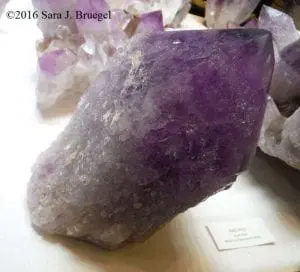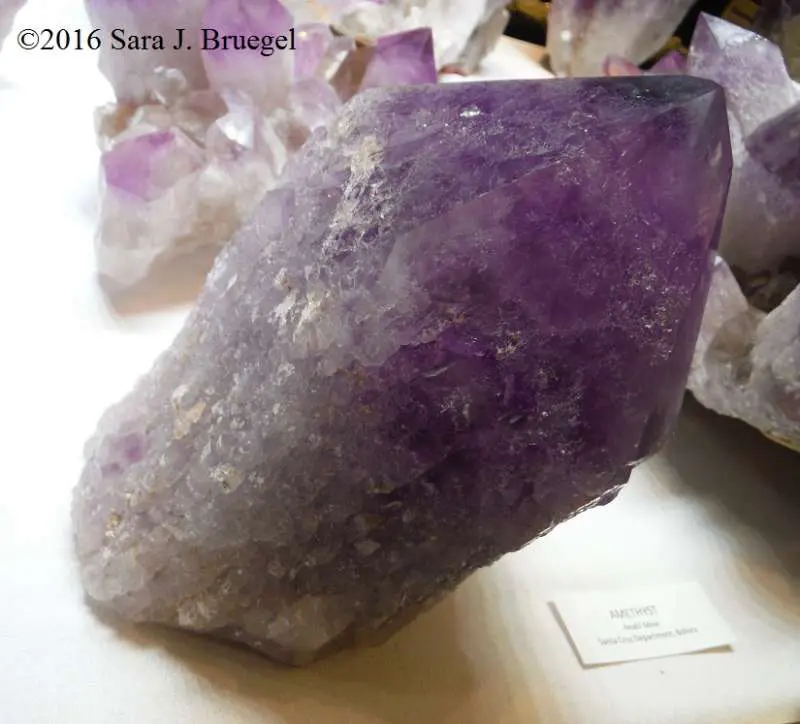“Is this a fossil? Or petrified wood?”, I was asked during a fossil dig in Kansas last week. After looking at the item of interest, I explained that the find was not a fossil, but the mineral, gypsum. I showed how scratching it with my fingernail left a mark. One of the handiest ways to recognizing gypsum is that it can be scratched with a fingernail. This is because gypsum is a very soft mineral. In “Part 1” of this article, we talked a little bit about the Mohs’ Scale of Hardness, ranging from 1-10 (diamonds are the hardest at a 10). Relatively harder things can scratch softer minerals. Since your fingernail is about a 2.5 on the Mohs’ scale it will scratch gypsum, which is slightly softer, as this mineral is ranked at a 2 on the Mohs’ scale (more about the mineral gypsum here).

There are a number of other ways to solve the mystery of what mineral you have found. Often, the best thing to do is just play around with it and test what different things do to your special find. Of course, the simplest place to start is by looking at the mineral. You will want to keep an eye out for what shapes its crystals are in (if there are visible crystals), what color it is, and how shiny or dull it looks. Sometime the minerals quartz and calcite can look very similar, but when you look at the crystals, you can notice that calcite crystals have more slanted look than quartz. If you still can’t tell, put some drops of vinegar on your mineral. The chemicals that make up calcite will react with the acid in vinegar, causing it to bubble, but quartz will not do anything. The same idea applies to some other minerals, too.
You may have to slightly damage your find to really identify it. The way it breaks apart can tell you a lot about a mineral. One of my favorite minerals is biotite. Biotite comes in super thin, flaky, transparent black sheets. Because of the way it breaks apart in regular sheets, all stacked in the same direction, biotite is said to “cleave”. Minerals that break apart in less perfect, regular directions are said to have different types of “fracture”. For example, if you break a mineral and it shows a circular pattern, that means it has “conchoidal fracture”. Looking at the way glass chips, whether in a car windshield or somewhere else, you can see this circular pattern showing up in those chips.

Identifying different types of minerals and rocks is a great example of observational science in action. Observational science is when we use our own senses and other tools to do repeatable tests, come to conclusions, and apply those conclusions to the future. Knowing what minerals we have can help us know how to put those God-given resources to use in everyday life. Many people will point to all the amazing discoveries and scientific breakthroughs like curing diseases and using minerals to advance technology and ask why young earth creationists challenge the “science” of evolution. But, this observational science is very different from historical science which tries to explain where things came from (evolution, creation, age of the earth, etc.). We can’t do repeatable experiments to observe things that happened in the past – that is history. Any historical science should be taken with a grain of salt, remembering that only people who there can really tell us what happened. The problem with evolution and and old is not so much a question of science, but one of history. Who do you trust for your history – the Lord of all, or the changing winds of current dominant opinion?
Copyright Sara J. Bruegel, June 2016





